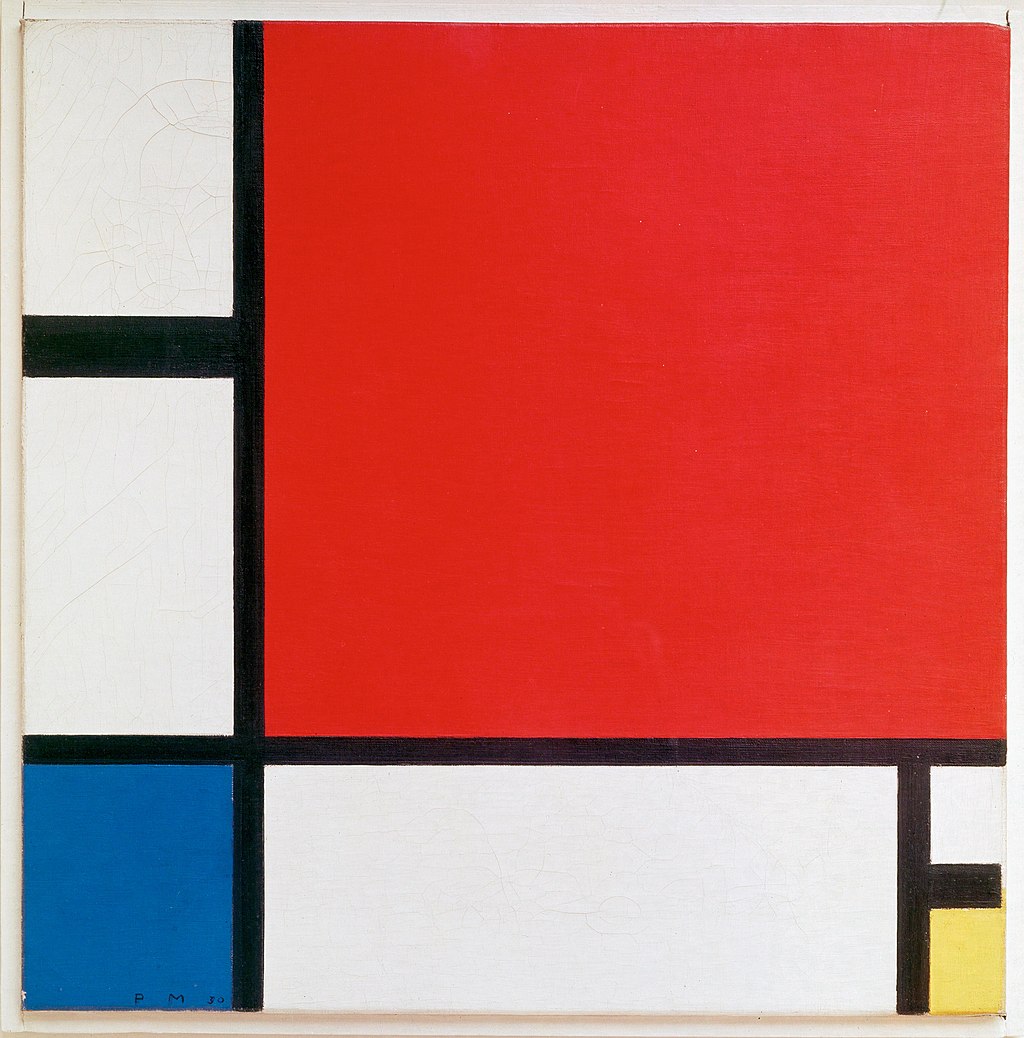Art and Word War I
World War I was a historic war due to its magnitude, publicity, and aftereffects. The destruction of both life and property was near-unheard of. It destabilized major parts of Europe both in society and the borders of the nations that made it up. Like most major upheavals, how people reacted to it was reflected heavily in their art.
Dadaism
 |
ABCD, made by Raoul Hausmann in Berlin, Germany, 1923 |
One of the responses to the horrors of war was a move to draw away from tradition, even to reject it entirely. Traditional art was disregarded in favor of something entirely new and theoretically untainted by the ideals that led to the war. Instead of a painting or sculpture, artists like Raoul Hausmann made collages of photographs to convey a message. The symbolism is heavy in this piece. The artist's face takes center stage with the letters ABCD appearing to be in his mouth, perhaps a representation of speech. The use of lines forms a triangular shape pointing to the left with the face in the middle. The artist appears to be yelling, the chaos of the image placement adding to the intense expression.
I am not a fan of this piece beyond the story behind it. Maybe I simply do not understand most of the symbolism or am uneducated in the intricacies of the placement. Nonetheless, if I had this image and was unaware of its historical value, I would probably put it in a drawer somewhere if I didn't get rid of it entirely. Perhaps that is the point of it, to be divisive and strange.
Surrealism
Nude Standing by the Sea, painted by Pablo Picasso in Paris, France, 1929
|
In a related movement, artists created surrealism. It drew inspiration from Dada, but was more in sculpture and painting, though the paintings are what is most well known. They too wished to throw out tradition after the war. Perhaps the breakdown of what is considered the 'right' way for things to look is a reflection of the trauma of war and the loss of what was before.
This painting reduces the human body into a nonsensical jumble of curves and straight edges. Some things can be linked to parts of the body, but others appear entirely fabricated. There is quite a contrast between the smoothly shaded sections and the harsh lines of the others. Strangely though, this piece does not appear to invoke stress. The light blue and tan color scheme combined with the unconcerned posture of what appears to be the subject instead presents an image that is more peaceful than anything else.
I don't like this one either. Without the title, I would not be able to understand what I am looking at. the shapes appear to all make sense in themselves, but don't work together well. I would not choose to own or display this piece. This is not a fault of surrealism in general, but in this particular iteration I could go without.
De Stijl
 |
| Composition II in Red, Blue, and Yellow, painted by Piet Mondrian in Paris, France, 1930 |
The next movement on the avant-garde track was De Stijl. The perfection of line and angle reigned supreme in this movement, lacking the curving lines and natural forms of previous styles. De Stijl wished to remake the world and to once again become new and untainted.
This particular example is a very minimalistic form of cubism. The bright primary color scheme offset by black lines is striking. The white in the other sections only intensifies the influence of the other colors. The lines themselves appear uniform in angle and width, flowing over and through each other in straight lines. It reminds me of a design on a children's hospital gown, vibrant and easily turned into a pattern.
This one is probably my favorite of these works and is the only one I may hang on a wall. I don't see anything fantastic about it, but it is inoffensive enough to simply be there to bring more color into a room.
Sources
Great exploration of all three styles that entered into the picture post WW1. I favored surrealism the most out of the other styles; I found the theme of exploring the unknown and breaking away from conformity to give way to brilliant creations during the time period. Surrealism pieces are hard to understand but the artist's did that intentionally, they were meant to allow viewers to bring there own unique interpretations of these pieces to light.
ReplyDelete